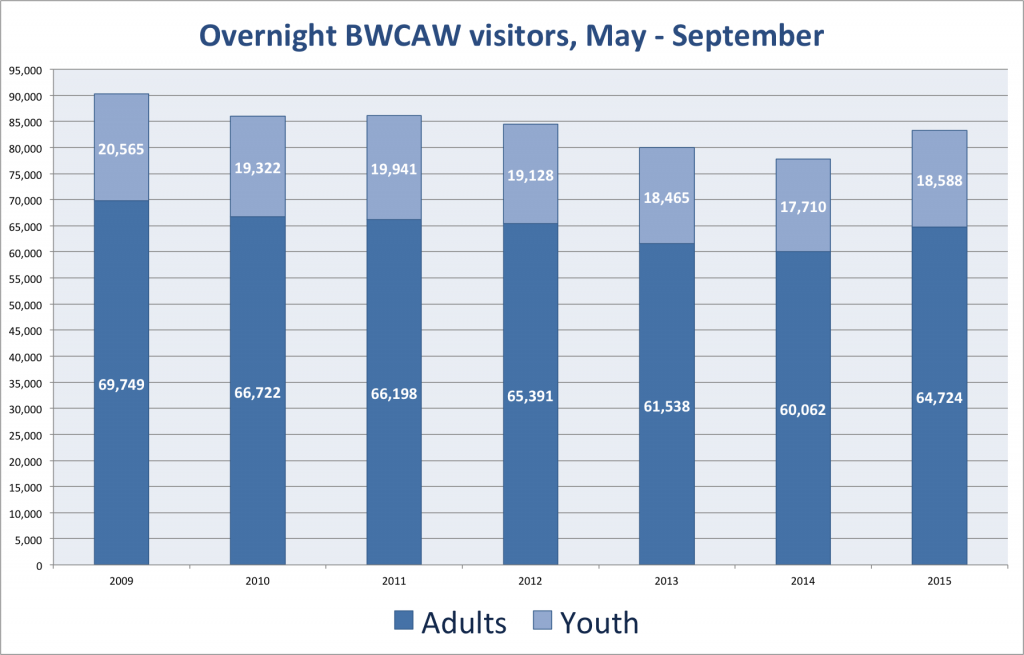
Visitor numbers in the Boundary Waters Canoe Area Wilderness declined slightly over the past seven years. That’s according to a new report from the Superior National Forest.
During the popular paddling season, which is mostly included in the May – September permit season, the number of total overnight visitors went from 114,029 in 2009 to 104,882 in 2015.
Ann Schwaller, a Superior National Forest wilderness specialist, says the trends can be difficult to discern, with annual visitor numbers dependent on several factors.
“Our visitor use always ebbs and flows. If there’s some big trend in drop of use, it’s going to go back up again. If we have no fires, and low bug hatch, and it’s mild temperatures, we’ll have more visitors,” Schwaller said.
The declining number of young paddlers is more troubling. The number of youth dropped more than adult visitors, raising doubts that future generations will visit the wilderness as much as their parents and grandparents.
“The biggest thing is it seems like the number of youths on our permits has gone down, which is really disconcerting,” Schwaller said.
Between 2009 and 2015, young visitors dropped by about 10 percent, while adults declined approximately seven percent.

At least two people working with visitors say they are optimistic. Kawishiwi Ranger District ranger Gus Smith told Minnesota Public Radio News that local outfitters have been reporting brisk business this summer.
Gunflint Trail outfitter Ada Igoe, co-owner of Tuscarora Lodge and Outfitters, says she thinks young people are possibly being undercounted.
“The thing that surprised me a lot was how many young people we do see through here. We see a lot of college-age kids, a lot of young adults, in their 20s or early 30s taking canoe trips,” Igoe told MPR.
The relatively small number of people visiting the wilderness in the “off-season,” between October and April, is growing in fits and starts. Between 2009 and 2015, it grew overall by 42 percent. Both fall canoeing and winter travel have increased in popularity, particularly as visitors seek more solitude.


